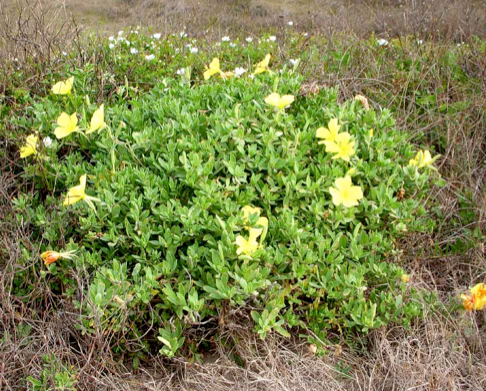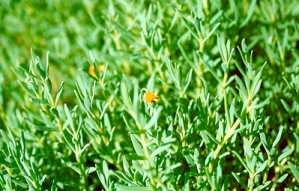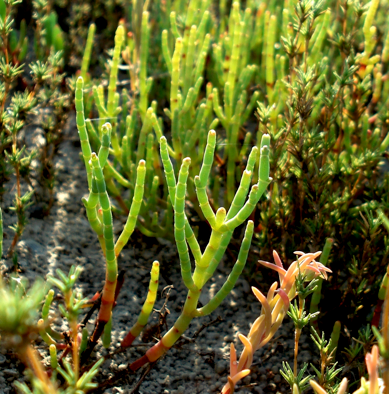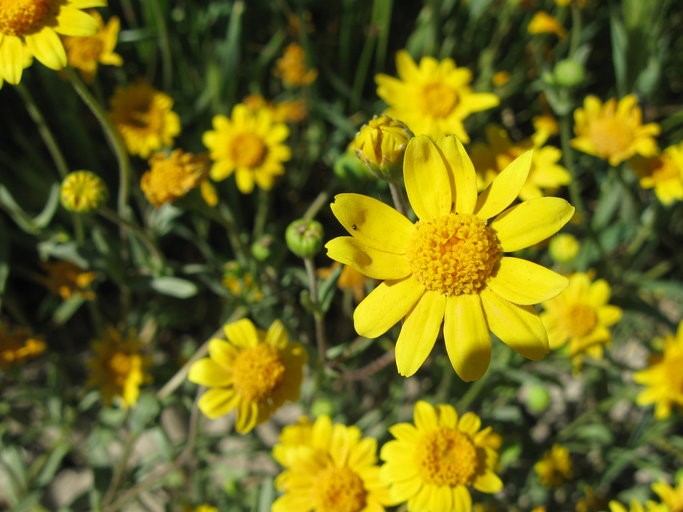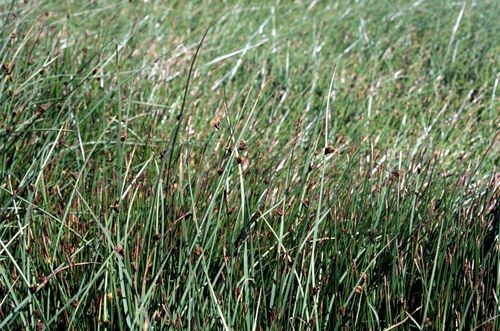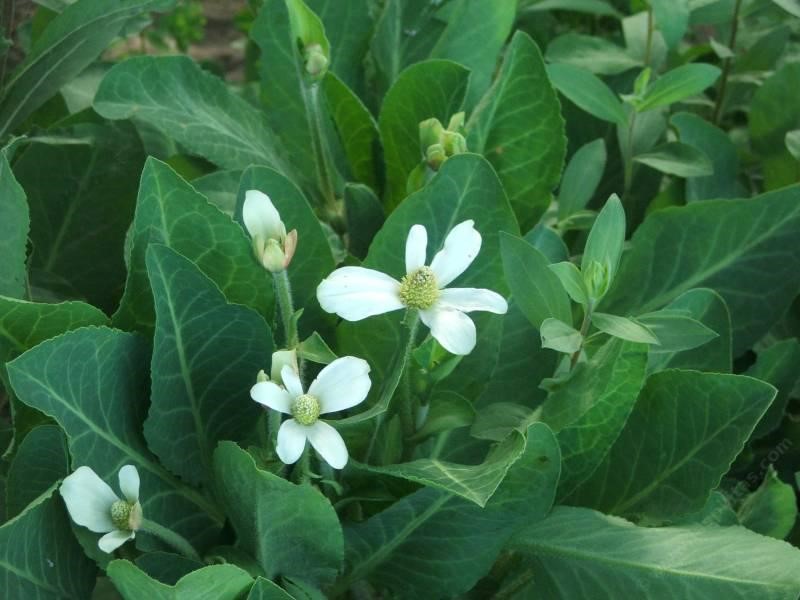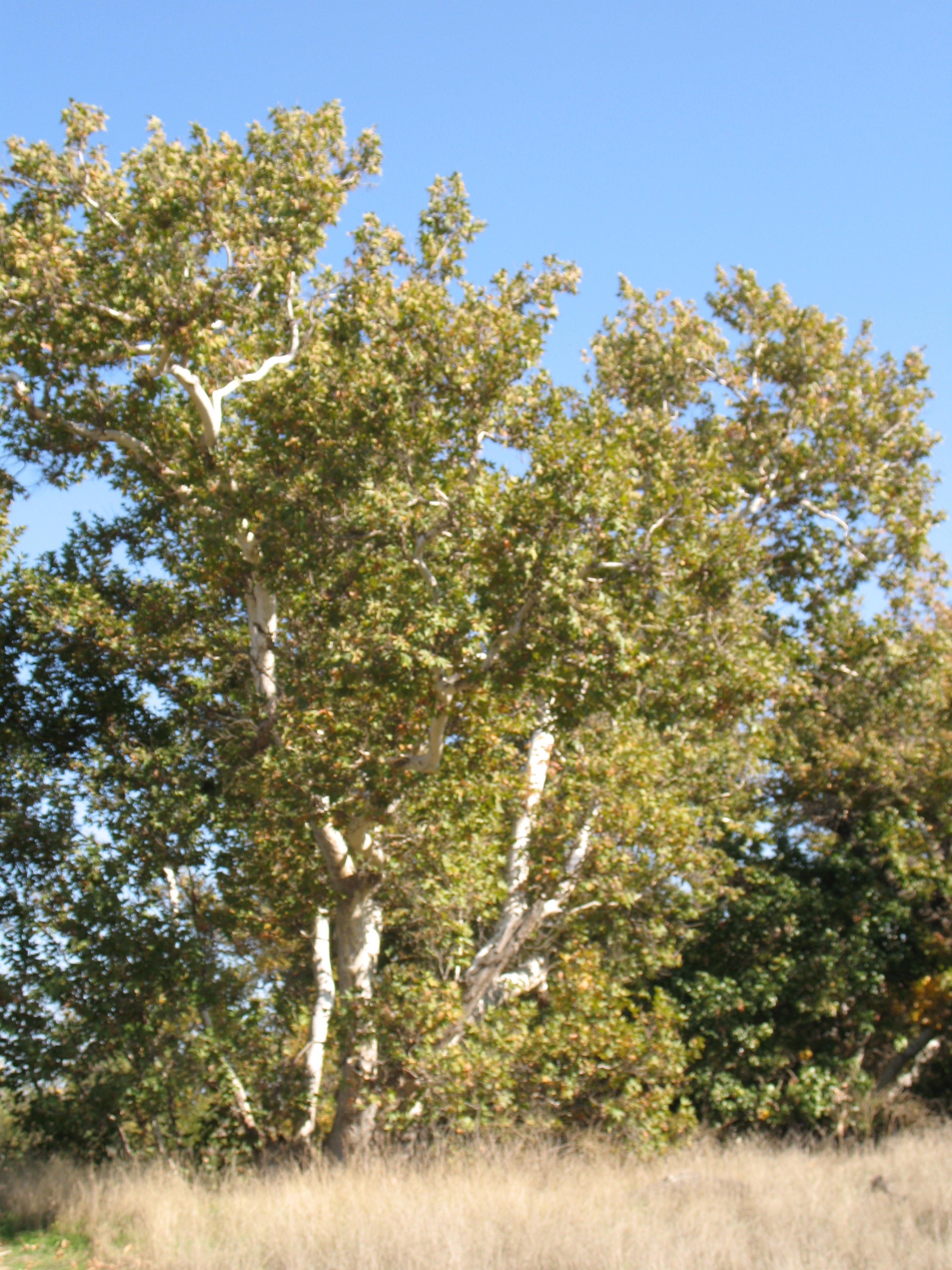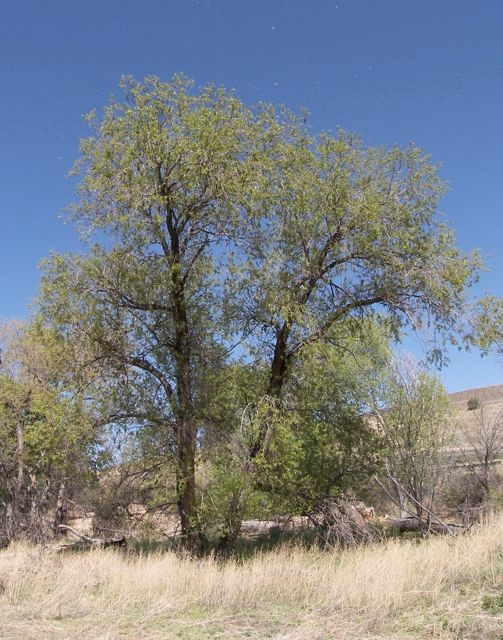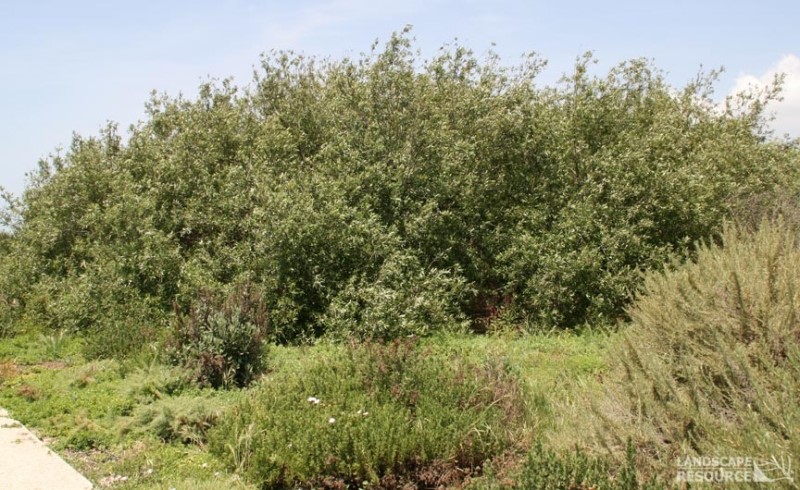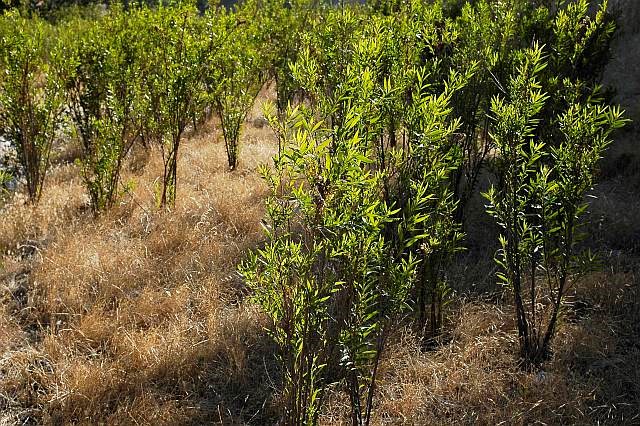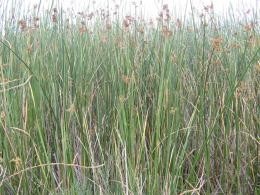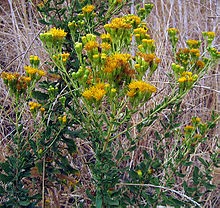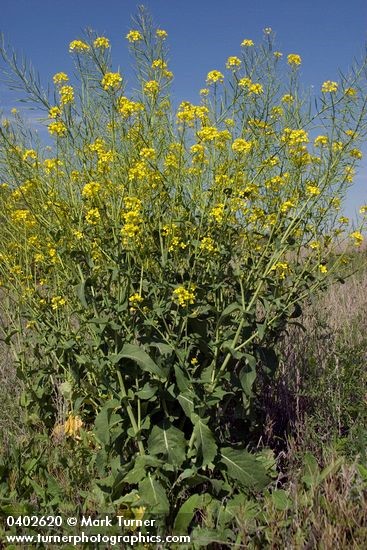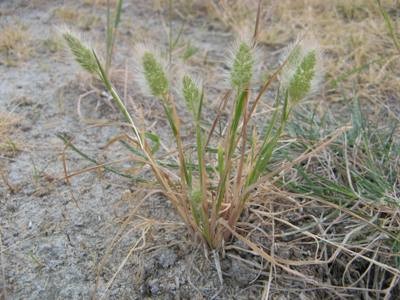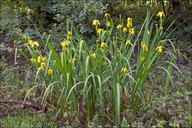PLANT GUIDE
Although it has been subject to much disturbance in the recent past, Los Peñasquitos Lagoon supports a variety of native vegetation communities that support a large number of plant and animal species that includes 35 sensitive plant species, 6 listed bird species, 5 listed reptile species and 1 insect species red-listed by the International Union for Conservation of Nature (IUCN).
Vegetation observed in the Lagoon includes a mosaic of saline, brackish, freshwater, riparian and transitional habitats. Many of these communities have been greatly reduced in Southern California. As a result, a number of the plant and wildlife species that rely on them for survival are now threatened with extinction. Coastal salt marsh associated with Southern California lagoons and estuaries is considered to be particularly valuable as approximately 91 percent of coastal wetlands in the state of California have been lost to development
Elevation, tidal inundation and soil salinity play key roles in the type of vegetation communities and their distribution within coastal estuaries such as Los Peñasquitos Lagoon. Before the rapid urbanization of the lagoon’s watershed that started in the 1980s, most of the Lagoon’s soils were hypersaline and vegetation communities consisted primarily of coastal salt marsh (tidal and non-tidal), salt flat and salt panne. However, with the build out of the Los Peñasquitos Watershed almost half of the Lagoon’s historical vegetation communities were lost between 1980 and 2000 as a consequence of rapid sedimentation and year-round flows of water from the Lagoon’s tributaries that were historically seasonal. As salinity levels dropped in both lagoon channels and within its soils, as well increased elevations from alluvial deposition, vegetation communities within Los Peñasquitos Lagoon began to change. Currently there are nine vegetation communities in Los Peñasquitos Lagoon:
• Southern Foredune
• Salt panne
• Coastal brackish marsh
• Riparian habitats
• Coastal freshwater marsh
• Transitional habitat
• Non-native grassland
• Disturbed upland habitat
Native plants can often support 10 to 50 times as many species of native wildlife as non-native plants.
– California Native Plant Society
Southern Foredune
Southern foredune is a sparsely vegetated community that is dominated by plants that are suffrutescent (i.e., having a base that is somewhat woody and does not die down each year) (Holland 1986). Plant species that are characteristic of this habitat include beach evening primrose (Camissoniopsis cheiranthifolia), red sand-verbena (Abronia maritima), beach sand-verbena (Abronia umbulata), and beach-bur (Ambrosia chamissonis). Within Los Peñasquitos Lagoon, this vegetation community also supports some cover of high salt marsh species, such as saltgrass (Distichlis spicata) and Pacific pickleweed (Salicornia pacifica), as well as invasive non-native species, such as sea fig (Carpobrotus edulis), crystalline iceplant (Mesembryanthemum crystallinum) and annual yeldy grass (Ehrharta longiflora). This vegetation supports several special status plants including, Nuttall’s acmispon (Acmispon prostratus) and coast woolly heads (Nemacaulis denudata var. denudata).
Common Name: Beach evening primrose
Scientific Name: Camissoniopsis cheiranthifolia
More Info
Photo by Herb Knufken.
Common Name: Beach sand verbena
Scientific Name: Abronia umbellata
More Info
Common Name: Nuttall’s lotus
Scientific Name: Acmispon prostratus
Status: RE-1B (Rare and Endangered in California and elsewhere)
More Info
Southern Coastal Salt Marsh
Coastal salt marsh is a highly productive habitat that supports an intricate food web that is rich in both invertebrate and vertebrate species. This vegetation community is typically constrained by elevation and confined to exist within the tidal range, though it can be found in elevations above tidal influence as occurs in Los Peñasquitos Lagoon when soil salinity levels are high. Termed halophytic (salt tolerant), plants that exist within southern coastal salt marsh can thrive in hypersaline conditions that allows them to outcompete plants from other vegetation communities. However, when soil salinity levels drop due to prolonged inundation by freshwater or rapid burial by fluvial sediments halophytic plants are typically displaced by species that thrive in brackish and freshwater based habitats, as well as those that establish quickly in freshly disturbed areas. Dominant plant species of coastal salt marsh within Los Peñasquitos Lagoon include Pacific pickleweed (Salicornia pacifica), alkali heath (Frankenia salina), fleshy jaumea (Jaumea carnosa), alkali weed (Cressa truxillensis) western marsh rosemary (Limonium californicum), and salt grass (Distichlis spicata). The Lagoon also contains Saltmarsh dodder (Cuscuta salina), a parasitic vine that is a native to coastal salt marsh and easily seen due to it bright orange color. Most of the remaining coastal salt marsh in Los Peñasquitos Lagoon can be found west of the railway berm, though areas of tidal and non-tidal coastal salt marsh can still be found east of the railway alignment.
Common Name: Alkali heath
Scientific Name: Frankenia salina
More Info
Common Name: Fleshy jaumea or Marsh jaumea
Scientific Name: Jaumea carnosa
More Info
Common Name: Alkali weed
Scientific Name: Cressa truxillensis
More Info
Common Name: Pacific pickleweed
Scientific Name: Salicornia pacifica
More Info
Common Name: Saltgrass
Scientific Name: Distichlis spicata
More Info
Common Name: Saltmarsh dodder
Scientific Name: Cuscuta salina
More Info
Salt Panne
Salt panne habitat can be described as a basin or small depression that traps saline waters during the highest spring tides and rainfall during wet periods. During the summer months, the water in these basins rapidly evaporates, resulting in hypersaline soils devoid of vegetation. During the winter, the pannes hold water and support algae and aquatic insects. Typically, salt pannes hold water only for a short period each year. Consequently, the productivity and complexity of the communities associated with this habitat are not well understood. Salt panne habitat in the Lagoon was historically most prevalent in the eastern portion of the Lagoon. Today, portions of the former salt panne habitat in Los Peñasquitos Lagoon have been buried by sediment deposition associated with Carmel Creek or invaded by freshwater marsh and riparian species and has succeeded primarily to cattail (Typha sp.) dominated freshwater marsh and southern willow scrub habitat. Plant species that inhabit salt panne (typically along its edges) include Lasthenia glabrata ssp. coulteri which is considered rare and endangered.
Common Name: Coulter’s Goldfields
Scientific Name: Lasthenia glabratta ssp. coulteri
Classification: RE-1B (Rare and Endangered in California and elsewhere)
More Info
Coastal Brackish Marsh
Coastal brackish marsh is a vegetation community that is intermediate between coastal salt marsh and freshwater marsh with some plants characteristic of each. Coastal brackish marsh is typically dominated by perennial, emergent herbaceous monocots approximately 2 meters in height and vegetative ground cover is often complete and dense.
Historically, much of the area in Los Peñasquitos Lagoon currently designated as brackish marsh was coastal salt marsh. However, increased freshwater inflows from the watershed have created brackish conditions in these areas, allowing for the colonization of freshwater marsh plants and invasive weed species that include Italian ryegrass (Lolium perennis). Plant species observed in the coastal brackish marsh community of Los Peñasquitos Lagoon include Pacific pickleweed (Salicornia pacifica), Parish’s pickleweed (Arthrocnemum subterminale), Olney’s bulrush (Schoenoplectus americanus), narrow-leaved cattail (Typha angustifolia), cocklebur (Xanthium strumarium), annual beard grass, and yerba manza (Anemopsis californica).
Common Name: Cocklebur
Scientific Name: Xanthium strumarium
More Info
Common Name: Olney’s or Chairmaker’s bulrush
Scientific Name: Schoenoplectus americanus
More Info
Common Name: Parish’s pickleweed or Parish’s glasswort
Scientific Name: Arthrocnemum. subterminale
More Info
Common Name: Yerba mansa
Scientific Name: Anemopsis californica
More Info
RIPARIAN HABITATS
Much of the acreage of riparian habitats is fairly new to Los Peñasquitos Lagoon and is a result of anthropogenic inputs of freshwater and sediment that began with the build out of the watershed that began in the 1980s and accelerated through to 2000. These habitats occur in areas that formerly supported non-tidal salt marsh, brackish marsh, and salt panne habitats.
Southern Willow Scrub
Most of the tree-dominated riparian vegetation at Los Peñasquitos Lagoon is best described as southern willow scrub or southern arroyo willow riparian forest. This vegetation is mainly composed of arroyo willow (Salix lasiolepis) but also supports smaller patches of taller-statured species including red willow (Salix laevigata), black willow (Salix goodingii), and western sycamore (Platanus racemosa). The understory of this vegetation is variable based on exposure to sedimentation and freshwater storm flows. Understory areas subject to sedimentation and scouring are heavily infested with non-native invasive plants including giant reed (Arundo donax), Cape Ivy (Delairea odorata), pampas grass (Cortedaria selloana), Castor bean (Ricinus comunis), hoary cress (Lepidium draba), periwinkle (Vinca major), and others.
Common Name: Western sycamore
Scientific Name: Platanus racemosa
More Info
Common Name: Red willow
Scientific Name: Salix lasiolepis
More Info
Common Name: Arroyo willow
Scientific Name: Salix lasiolepis
More Info
Mule-Fat Scrub
Mule-fat scrub is a depauperate (not well developed), tall herbaceous riparian scrub strongly dominated by mule-fat (Baccharis salicifolia). This early seral community is maintained by frequent flooding and is rapidly colonizing brackish marsh habitats within the Lagoon below the confluence of Los Peñasquitos Creek and Carroll Canyon Creek. Alkali heath (Frankenia salina) and San Diego marsh elder (Iva hayesiana) are common within the understories of new colonies of mule-fat scrub. Other species typically observed in this vegetation community include arrow weed (Pluchea sericea), coyote bush (Bacharris pilularis), Canadian horseweed (Erigeron canadensis), and cattail (Typha sp.).
Common Name: Mule-fat
Scientific Name: Baccharis salicifolia
More Info
Common Name: Coyote Bush
Scientific Name: Bacharris pilularis
More Info
Common Name: Arrow weed
Scientific Name: Pluchea sericea
More Info
Coastal Freshwater Marsh
Coastal freshwater marsh is dominated by perennial, emergent monocots 4 to 5 meters tall, often forming completely closed canopies. Plant species characteristic of this community include cattails and viscid bulrush (Scirpus acutus = Schoenoplectus acutus). Like southern willow scrub, freshwater marsh was historically confined to freshwater riparian areas upstream of Los Peñasquitos Lagoon. This vegetation community, however, has also been affected by freshwater inflows and is no longer confined to the river channels but occurs where the freshwater sheet flows in the southern and eastern portions of the Lagoon. In Los Peñasquitos Lagoon, coastal freshwater marsh is dominated by cattail or bulrushes that include California bulrush (Schoenoplectus californicus) and chairmaker’s bulrush (Schoenoplectus americanus). In addition to extending the range of this vegetation community within the Lagoon, freshwater inflows, sedimentation, and other disturbances have resulted in the colonization of exotic plant species with Italian rye grass being prevalent. As a result, coastal freshwater marsh in Los Peñasquitos Lagoon can be currently described as disturbed. Exotic plant species observed in this habitat type include water iris (Iris pseudacorus), annual sweet clover (Melilotus indicus), and curly dock (Rumex crispex).
Common Name: Cattail
Scientific Name: Typha sp
More Info
Common Name: California bulrush
Scientific Name: Schoenoplectus californicus
More Info
TRANSITIONAL HABITAT
The term transitional habitat has been used by numerous wetland biologists to describe areas that support high elevation coastal salt marsh elements and upland plant species. Typically, this habitat type occurs as a narrow band where upland habitats and wetland habitats overlap. At Los Peñasquitos Lagoon, transitional habitat occurs primarily in fragment patches in the extreme northwestern portion. Additional transition zone habitat occurs in the south-central part of the Lagoon in association with man-made structures such as berms and dikes. Dominants species within transitional habitat at Los Peñasquitos Lagoon include coast goldenbush (Isocoma menziesii), southwest spiny rush (Juncus acutus ssp. leopoldii), and Granny’s hairnet (Pterostegia drymarioides).
Common Name: Goldenbush
Scientific Name: Isocoma menziesii
More Info
Common Name: Granny’s hairnet
Scientific Name: Pterostegia drymarioides
More Info
Common Name: Southwestern spiny rush or Leopold’s rush
Scientific Name: Juncus acutus ssp. leopoldii
More Info
NON-NATIVE GRASSLAND & OTHER INVASIVE SPECIES
In Los Peñasquitos Lagoon, non-native grassland is used to describe areas that once supported high elevation salt marsh habitat that, as a result of sedimentation and freshwater flows, are now dominated by non-native grasses. Sparsely distributed salt marsh elements, such as Pacific pickleweed and alkali heath have been observed in the Lagoon; however, non-native grasses were the dominant species. In Los Peñasquitos Lagoon, plant species of this vegetation community include mainly Italian rye grass (Festuca perennis). In transition zones or areas subject to former disturbance or heavy sedimentation, ripgut grass (Bromus diandrus), soft chess (Bromus hordeaceus), foxtail chess (Bromus madritensis ssp. rubens), are also present. Some of the areas dominated by Italian ryegrass also support low abundances of Parish’s pickleweed, alkali heath, and other salt marsh species.
Common Name: Curly Dock
Scientific Name: Rumex crispus
Status: Invasive
More Info
Common Name: Black mustard
Scientific Name: Brassica nigra
Status: Invasive
More Info
Common Name: Iceplant or Hottentot fig
Scientific Name: Carpobrotus edulis
Status: Invasive
More Info
Common Name: Brass buttons
Scientific Name: Cotula coronopifolia
Status: Invasive
More Info
Common Name: Curly Dock
Scientific Name: Rumex crispus
Status: Invasive
More Info
Common Name: Iceplant or Hottentot fig
Scientific Name: Carpobrotus edulis
Status: Invasive
More Info
Common Name: Rabbitfoot grass
Scientific Name: Polypogon monspeliensis
Status: Invasive
More Info
Common Name: Wild radish
Scientific Name: Raphanus sativus
Status: Invasive
More Info
Common Name: Yellow iris
Scientific Name: Iris pseudacorus
Status: Invasive
More Info
